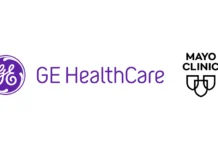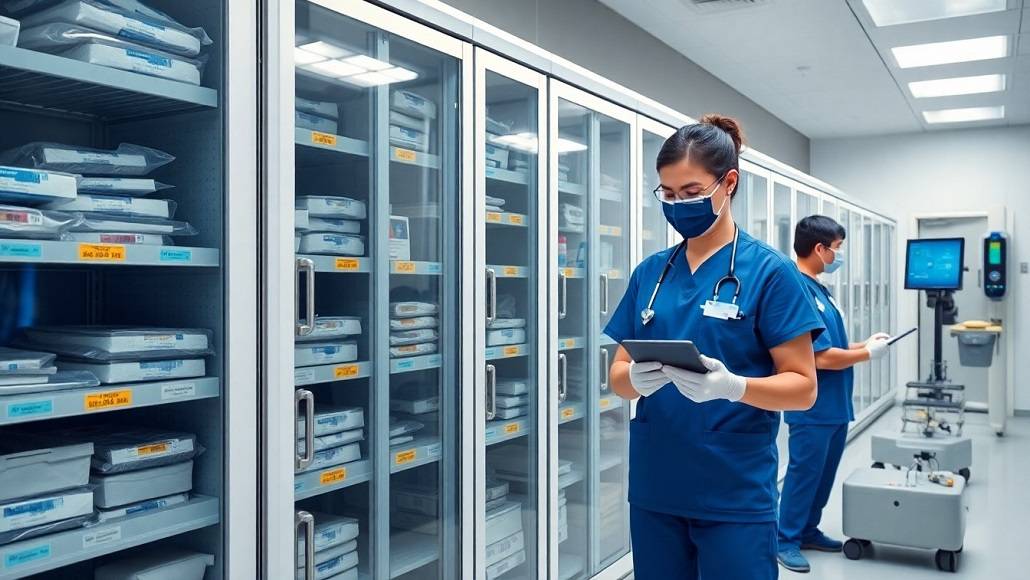Medical supply and equipment management has been an integral part of healthcare for decades. Traditionally, hospitals and clinics struggled with storage chaos, resulting in damaged products or delayed patient care. As medical technology became increasingly advanced and the range of supplies widened, the demand for storage solutions became apparent. Now, efficient storage solutions safeguard equipment, keep it clean, and locate it easily. This makes it possible for the medical staff to work effectively and deliver care on time. Proper storage prevents expensive equipment and sensitive products from being damaged or contaminated. Properly maintained storage leads to streamlined workflow and better patient care. Healthcare facilities now invest heavily in storage units that meet high safety and sanitation standards to facilitate high-quality care on a daily basis.
Observation:
In the past, messy storage caused problems like lost equipment and slower care. Better storage systems have made it easier for medical teams to find and protect what they need, helping patients get the help they deserve more quickly.
Challenges in Equipment Storage
Storing medical equipment and supplies comes with many challenges that can impact healthcare quality. Without proper organization, items can be misplaced or damaged, causing delays in treatment. Limited storage space often forces staff to overcrowd shelves, increasing the risk of accidents and contamination. Poor labeling can lead to confusion about item locations or expiration dates. Equipment may also suffer from improper handling or environmental conditions like humidity and temperature fluctuations. Additionally, maintaining cleanliness and sterility is critical but difficult in cluttered spaces. Theft or unauthorized use of valuable equipment is another concern. These common challenges highlight why effective storage solutions are necessary.
Some frequent issues include:
- Limited space leading to overcrowding
- Misplaced or lost supplies
- Confusion due to poor labeling
- Risk of contamination and damage
- Inconsistent cleaning and maintenance
- Theft or unauthorized access
- Difficulty in tracking expiration dates
Recognizing these problems is the first step toward improving storage systems, which supports better patient care and safer working environments.
Benefits of Proper Storage
Proper storage plays a vital role in the management of medical equipment and supplies by ensuring safety, organization, and efficiency. One important aspect is the use of NSA Storage units, which offer secure, climate-controlled environments designed to protect sensitive medical materials from damage and contamination. These units help maintain optimal temperature and humidity levels, which is crucial for preserving the integrity of delicate equipment and sterile supplies. Proper storage also reduces the risk of loss or theft by providing controlled access and organized spaces where items are easy to locate. When medical staff can quickly find the supplies they need, it speeds up patient care and reduces stress. Additionally, well-maintained storage extends the lifespan of costly equipment and lowers replacement costs. Efficient storage systems improve inventory tracking and help prevent expired or obsolete items from being used. Overall, investing in proper storage solutions supports better healthcare delivery by keeping medical environments safe, clean, and well-organized. Proper storage contributes not only to operational efficiency but also to patient safety and satisfaction, making it a fundamental part of healthcare management.
Facts: Proper storage can extend equipment lifespan by up to 40 percent. Climate-controlled units reduce contamination risks significantly. Organized storage improves inventory accuracy and accessibility.
Choosing Storage Solutions
The selection of the right storage solutions for medical equipment and supplies is necessary to ensure safety and efficiency within healthcare facilities. The range of objects stored—including sensitive instruments to bulk products—requires storage options to be versatile and durable. Each category of equipment has specific requirements, such as control of temperature for sensitive items or locking mechanisms for valuable items. Limited space necessitates the use of storage solutions that effectively use vertical and horizontal space without sacrificing accessibility. Strong, long-lasting materials to resist repeated cleaning and disinfection are high on the list to maintain hygiene requirements. The system should facilitate the identification and return of items easily to conserve time and reduce the risk of errors. Safety is an important component to protect against theft or unauthorized persons from accessing items, such as controlled substances or high-value technology. Storage solutions should also provide flexibility to adjust to future growth or changing inventory. Careful selection of storage solutions ensures healthcare professionals have ready access to the items they need to deliver better care to patients. Careful planning and selection of the storage options result in the creation of safer, more efficient medical settings where the equipment is safeguarded and professionals have the ability to work more efficiently.
Organizing Medical Supplies
Keeping medical supplies organized is key to efficient healthcare operations. Grouping similar items and clearly labeling storage areas helps staff find what they need quickly. Regularly checking supplies for expiration dates and cleanliness ensures safety and readiness. Maintaining neat and orderly storage spaces prevents clutter and reduces the risk of contamination or damage. Simple organizational habits support smooth workflows, allowing healthcare providers to focus on patient care without unnecessary delays or confusion.
Maintaining Equipment Safety
Maintaining the safety and functionality of medical equipment is essential for effective healthcare delivery. Proper storage plays a critical role in preserving equipment and supplies, ensuring they remain in optimal condition for use. There are several important steps healthcare facilities should follow to maintain equipment safety. First, regular cleaning and sterilization help prevent the spread of infections and keep equipment hygienic. Second, monitoring storage conditions like temperature and humidity protects sensitive instruments from damage caused by environmental factors. Third, inspecting equipment routinely allows staff to detect wear or malfunctions early, reducing the risk of failure during use. Fourth, training personnel on correct handling and storage procedures minimizes accidental damage and maintains equipment integrity. Fifth, organizing storage to prevent overcrowding ensures that items are not crushed or misplaced, further protecting their usability. These steps contribute to a safer healthcare environment and enhance patient outcomes by reducing equipment-related complications. Taking care of medical equipment through proper storage and maintenance also extends its lifespan, saving facilities money in the long run. By implementing these safety practices, healthcare providers create a reliable system that supports smooth operations and quality care. Consistent attention to equipment safety is a fundamental part of medical management that benefits both staff and patients, making healthcare settings safer and more effective.
Final Thoughts on Medical Storage
Proper storage of medical equipment and supplies is essential for safe and efficient healthcare. Organized and well-maintained storage improves access, protects valuable items, and supports better patient care. Investing in the right storage solutions helps healthcare facilities run smoothly and ensures equipment is always ready for use. Good storage practices reduce risks and contribute to a healthier, safer environment for both patients and staff.


















